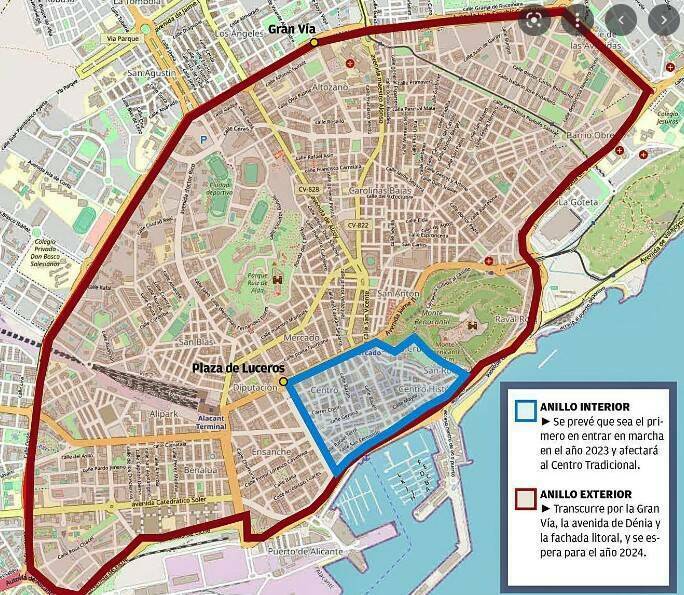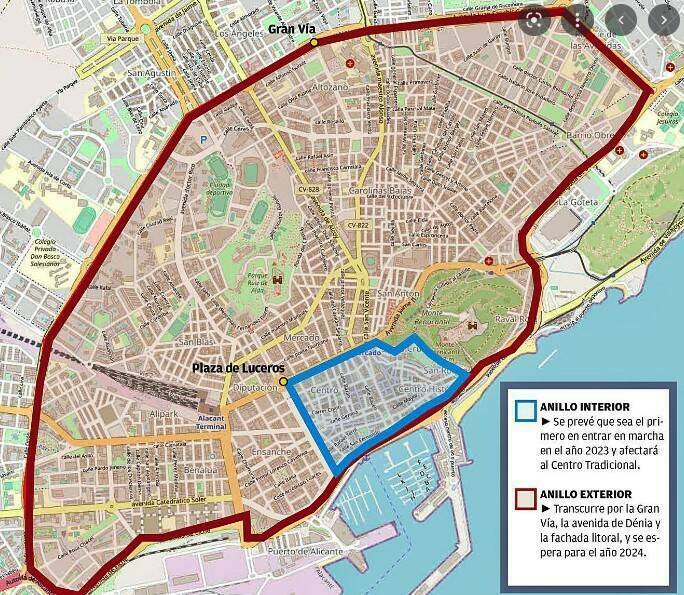The Alicante Low Emissions Zone (ZBE) will not come into operation until the second half of 2024, at the earliest.
The extension agreed with the Ministry for the Ecological Transition for the completion of the redevelopment and traffic calming projects that are still ongoing, which was announced in December, now has continuity with the extension of the deadline for the implementation of the control network of that ZBE: a project that was awarded to the company Tecnologías Viales Aplicadas (TEVA) in November 2022, for 4.4 million euro.
So what, specifically, does this control network consist of? In accordance with the project designed by the Department of the Environment, and with the proposal presented by TEVA, it includes the installation of two networks of sensors and intelligent license plate recognition systems, to be installed on the Gran Vía route and on the perimeter of Alfonso el Sabio and Doctor Gadea, to control and restrict the access of polluting vehicles, with the purpose of reducing current road traffic in the central district by up to 20%, particularly those vehicles that will exceed the permitted levels of contamination.
These tracking and monitoring points will be located so that they can capture information on the movement of vehicles and transfer it to the Traffic Control Room.
The extension of the deadline for the implementation of this control network is justified by the need to undertake the development of civil works on the streets and avenues that make up the ZBE, which have been subjected to redevelopment and traffic calming actions. While these works were to be completed by the end of 2023, several of them are still in development, although traffic has already been restored on most of the routes.
The extension to the time frame is necessary for the completion of the control network, since the civil works phase on those roads would have prevented part of the work entrusted to TEVA from being carried out, such as the installation of the fibre optic cabling necessary for the deployment of the sensor network and the installation of the ZBE signalling measures, although some tasks could have been implemented simultaneously.






